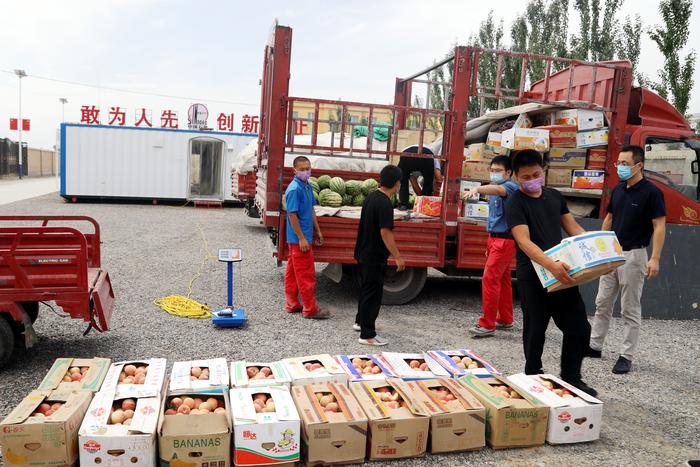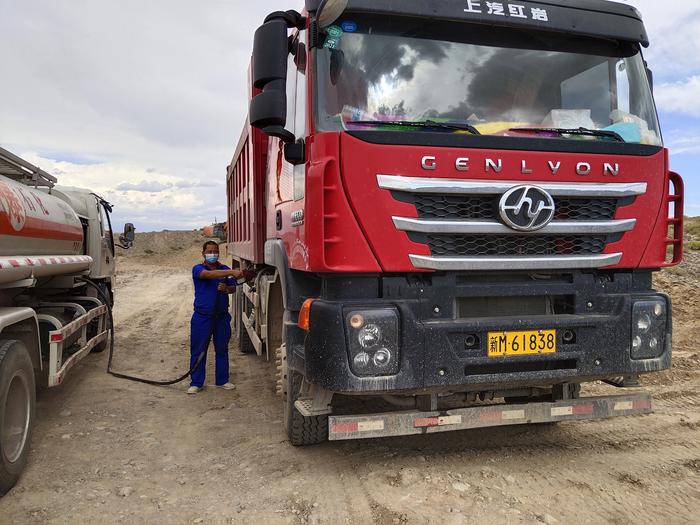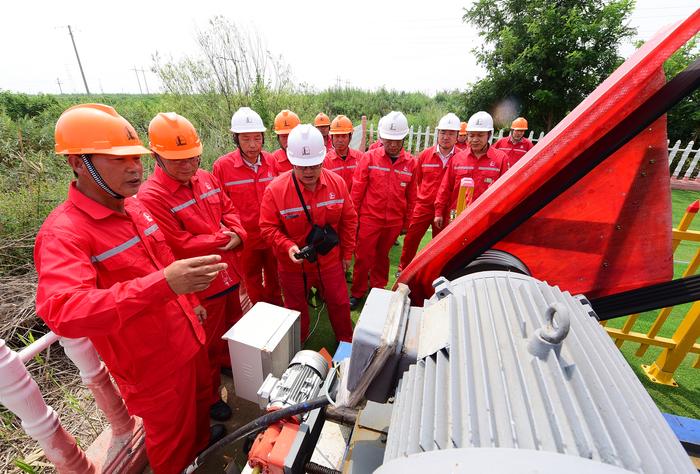|
| 2020-08-13 来源: 中国石化新闻网 |
| 石化新闻 |
中国石化新闻网讯 据油价网休斯敦报道,超过300亿美元:这是今年上半年美国申请破产保护的石油和天然气公司的债务总和。今年上半年美国共有23家公司提交了破产保护申请,其中有5家公司是在第二季度Covid-19疫情已真正形成时提交申请的。现在,随着新申请案例的重新出现,对石油需求前景的疑虑也同样重新抬头,更多的破产保护申请将接踵而至。Haynes和Boone律师事务所在6月份发表的石油和天然气公司申请破产保护报告中称,“有理由预计,即使未来几个月油价回升,仍有相当多的油气生产商将继续寻求来自债权人的破产保护。”原因是:微温的石油需求改善和更加微温的经济改善。Haynes和Boone律师事务所指出,在经济恢复正常之前,石油和天然气的现状不太可能出现任何显著改善。 然而,在该行业内,不同的部门有不同程度的脆弱性。例如,正如韦斯特伍德全球能源集团在最近的一份报告中指出的那样,油田服务部门是最脆弱的。由于几乎完全依赖上游部门,油田服务部门传统上是最脆弱的部门。正如我们在上次危机中看到的那样,当勘探和生产下滑时,实际上提供这些服务的公司受到的影响最大。尽管上游行业也受到了2014-2016年油价暴跌的沉重打击,但对他们的服务提供商来说,情况没有那么糟糕。后者被迫降低其服务的价格以求生存,这反过来帮助生产商限制了他们的损失。 韦斯特伍德全球能源集团咨询主管阿林达姆•达斯在对美国油价网的评论中指出,目前上游行业也处于困境,尤其是美国页岩行业。达斯表示,美国页岩气生产商是油气行业中仅次于油田服务提供商的最脆弱群体,加拿大西部的小型勘探和生产公司也是如此。 还记得那些在今年上半年破产的公司所积累的300亿美元的债务吗?确切的数字是306.2亿美元,相比之下,2019年全年破产的所有页岩公司的累计债务为257.7亿美元。仅在今年第二季度,申请破产保护的能源公司就累积了290亿美元的债务——再次超过了去年全年的数字。银行也越来越不愿意和这样一个麻烦缠身的行业打交道。 在危机爆发前,贷款机构就开始收紧对来自页岩盆地的借款人的要求,这是因为尽管总体产量出现激增,但其中许多借款人一直未能实现其生产目标。现在,由于经济前景比过去很长一段时间都要严峻,贷款机构进一步收紧了贷款要求,不过,正如韦斯特伍德全球能源集团的达斯指出的那样,银行仍然对信誉良好的企业开放。 在这方面,油田服务提供商的地位几乎比其他所有公司都要脆弱。达斯表示,在危机爆发之前,银行已经减少了对这一行业的风险敞口,而且在收紧对仍是其客户的这一行业参与者的贷款标准的同时,银行似乎还会继续这样做。 或许合并可以帮助美国石油和天然气行业重新站起来,但到目前为止,唯一登上头条的重大交易是雪佛龙公司收购诺布尔能源公司,其中不确定性是一个很大的因素。该行业的未来,尤其是页岩行业的未来充满了不确定性,这可能会抑制私人股本支持的公司的胃口,否则这些公司就会一股劲地扑向这块美味的蛋糕。 根据达斯的说法,这种情况可能会改变。私人股本支持的买家仍可能决定利用低油价环境的优势,这种环境使许多资产变得便宜。达斯指出,如果出现这种情况,他们将会追求能产生现金的资产,而不是需要巨额投资才能开发的处于开发早期阶段的资产。事实上,这似乎是业内普遍的看法。 今年早些时候,Natural Gas Partners的合伙人戴维· 海耶斯告诉《米德记者电报》:“当油价回到50美元左右的价位时,我们将会再次进行钻井作业。它将是非常规的,但它将更加注重发展。”“任何只要有一点点勘探的迹象,都不是近期资本关注的焦点,无论是公有还是私有资本。” 似乎没有人愿意冒太大的风险,这是可以理解的:这种情况是前所未有的。 托克集团首席经济学家萨阿德·拉希姆在4月份告诉《华尔街日报》记者:“自从人类开始使用石油以来,我们从未见过这样的情况。我们根本没有可以遵循的指南。这种情况是未知的。” 在这样的一个环境中,小心谨慎将成为所有人——卖家和买家、贷款人和股东——博弈的根本目标。 李峻 编译自 油价网 原文如下: U.S. Shale Faces Another Round Of Bankruptcies More than thirty billion dollars: this is the size of the collective debt of oil and gas companies that filed for bankruptcy protection in the first half of the year. That is 23 companies, all but five of which filed during the second quarter when Covid-19 really took hold. Now, with the resurgence of new cases and an equal resurgence in doubts about the outlook for oil demand, more filings are on the way.“It is reasonable to expect that a substantial number of producers will continue to seek protection from creditors in bankruptcy even if oil prices recover over the next few months,” Haynes and Boone said in its June report on oil and gas bankruptcies. The reasons: lukewarm oil demand improvement and even more lukewarm economic improvement. Until economies return to normal, the law firm noted, the situation for oil and gas is unlikely to book any marked improvement. Yet within the industry, different segments have different degrees of vulnerability. Oilfield services, for instance, is the most vulnerable, as Westwood Global Energy Group noted in a recent report. Oilfield services are traditionally the most vulnerable because of their almost complete dependence on the upstream segment. When exploration and production slump, the companies actually providing these services suffer the most, as we saw during the last crisis. While the upstream segment also took a hard hit from the 2014-2016 oil price collapse, it was not as painful as it was for their services providers. The latter were forced to lower the prices of their services to survive, which in turn helped producers to limit their losses. Arindam Das, head of consulting at Westwood Global Energy Group, noted in a comment on Oilprice.com that the upstream industry is also in trouble, particularly in the U.S. shale industry.According to Das, shale gas producers are the most vulnerable group in the oil and gas industry after oilfield service providers, as are small exploration and production companies in western Canada. Remember the $30 billion in debt accumulated by companies that went bust in the first half of this year?The exact figure is $30.62bn, compared with the cumulative debt of $25.77bn for all companies that went bankrupt in the whole of 2019.In the second quarter alone, energy companies that filed for bankruptcy protection piled up $29 billion in debt -- again more than for all of last year.Banks are also increasingly reluctant to do business with such a troubled industry. Lenders started tightening their requirements for borrowers from the shale patch before the crisis, as many of them kept failing to hit their production targets despite the overall production boom. Now, with the outlook grimmer than it has been for a long time, they are tightening their lending requirements further, although, as Westwood’s Das notes, banks remain open to businesses with long-standing good names. Here again, oilfield services providers are in a weaker position than pretty much everyone else. Banks have been reducing their exposure to this segment of the industry for a while before the crisis struck, according to Das, and it seems they will continue doing that while they tighten their lending criteria for the sector players that are still their clients. Perhaps a consolidation could help the U.S. oil and gas industry get back on its feet, but so far, the only major deal that made headlines was Chevron’s acquisition of Noble Energy. Uncertainty is a big factor here. The future of the industry, especially the shale patch, is highly uncertain, and this may be dampening the appetite of private equity-backed companies that would have otherwise swooped in to pick up the tastiest morsels. This might change, according to Das. Private equity-backed buyers could yet decide to take advantage of the low oil price environment that is making a lot of assets cheap. If that happens, they will go after cash generative assets, Das noted, rather than assets in the early stages of development that would require a hefty investment to exploit. Indeed, this seems to be the prevailing sentiment in the industry. “We will be drilling wells again when oil is back in probably the $50 range,” David Hayes, partner at Natural Gas Partners, told the Midland Reporter-Telegram earlier this year. “It will be unconventional, and it will be horizontal, but it will be much more development-focused. Anything with even a whiff of exploration is not a near-term focus for capital, public or private.” Nobody, it seems, wants to risk too much, and this is understandable: the situation is unprecedented. “Since humans started using oil, we have never seen anything like this,” the chief economist of Trafigura, Saad Rahim, told the Wall Street Journal in April. “There is no guide we are following. This is uncharted.” In such an environment, caution would be the name of the game for everyone—sellers and buyers, lenders, and shareholders. |








